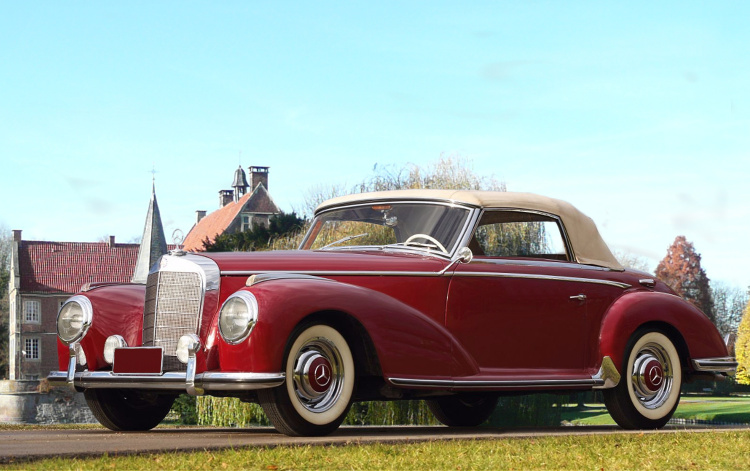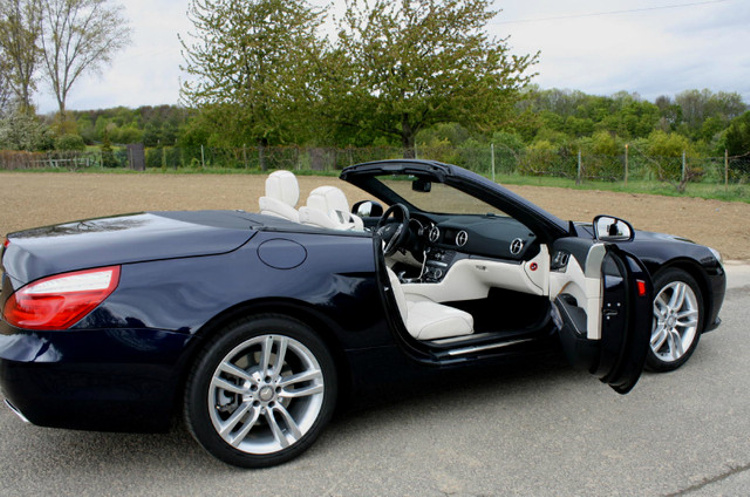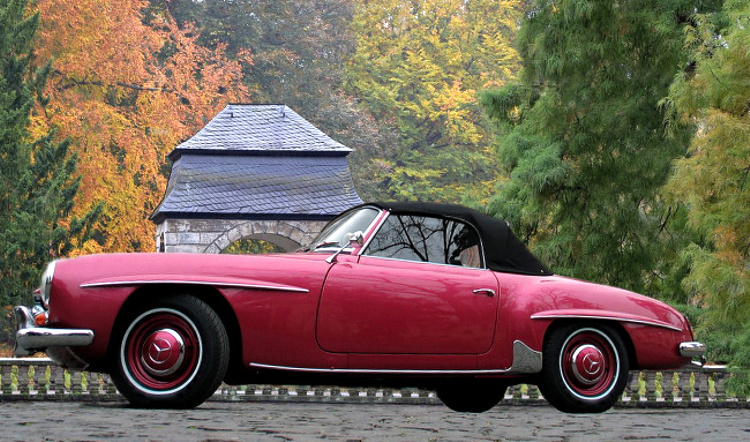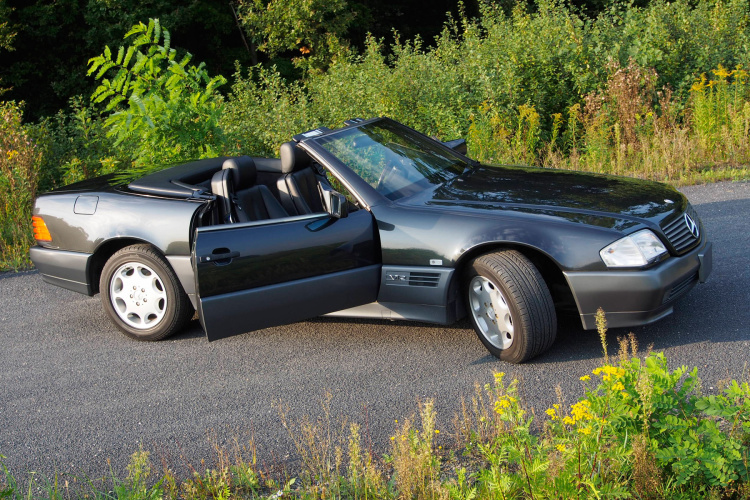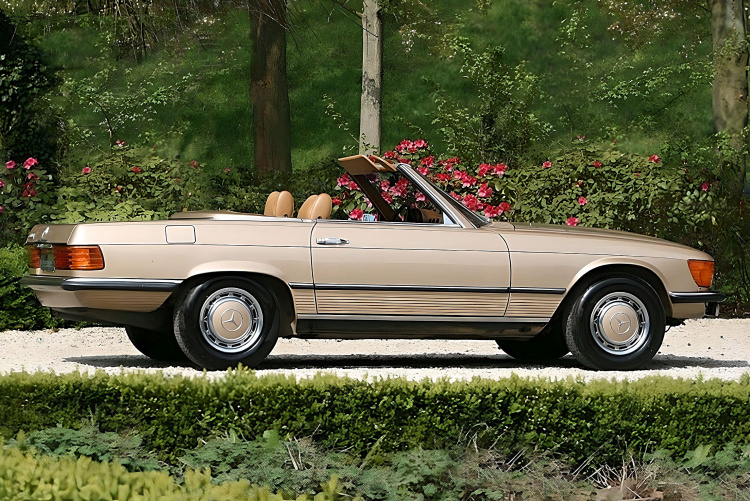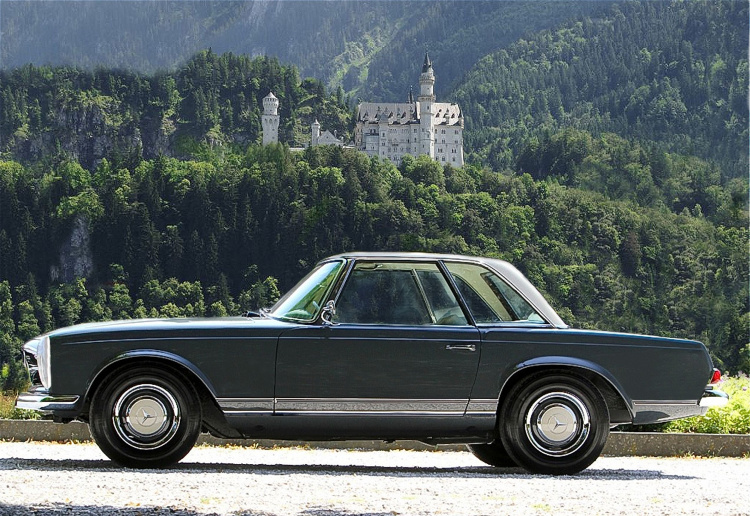Mercedes 190 SL, the car that saved the SL name

Mercedes 190 SL: The 190SL did not have an easy start in life. Not that it was the black sheep of the family, but neither was it the white swan. It was the little brother of a show business star who had been sent to a gifted plastic surgeon to make him look the part. That beauty was just skin deep, though, for underneath it all was not the talent of a thoroughbred, but the genes of a reliable, hard-working farm horse.
Max Hoffman, U.S. importer for Daimler-Benz and other brands in the 1950s, was, as we all know, behind the 300SL. He knew his American clientele, so he asked the Daimler-Benz board not only for the super car, but also for a similar-looking beauty for people who wanted the looks, but not necessarily the price tag.
Daimler-Benz, which had no significant presence in the U.S., listened to what Mr. Hoffman had to say. But Hoffman was not satisfied with the response. At a meeting between Hoffman and Daimler-Benz executives in Stuttgart on September 2, 1953, it was suggested that the 180 Sedan platform be used.
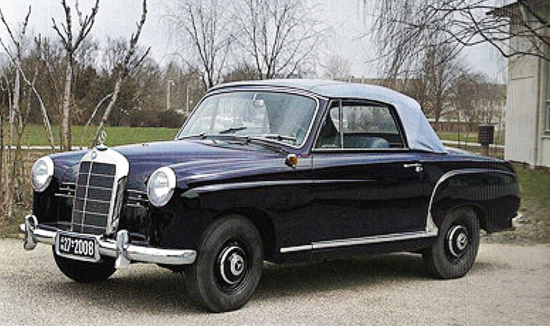
The wrong option
When Nallinger showed Hoffman the concept of a lower-priced convertible based on the 180 sedan, the famously short-tempered Hoffman simply replied: “That’s not going to happen”. Of course, he would have been right if the project had gone ahead. Something more attractive was needed.
Shortly after this meeting, on September 25, 1953, stylist Walter Häcker showed his boss, head of design Karl Wilfert, the first blueprints of what would become the Mercedes 190 SL prototype.
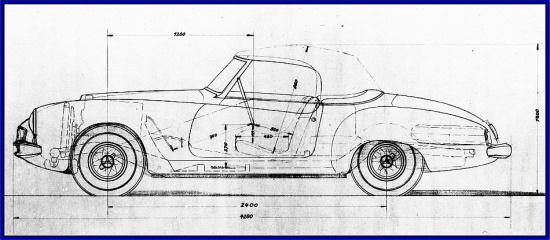
Everyone, including Hoffman, was excited; not only did the car have similarities to the 300SL, but it also carried design elements from the 180/190 sedan backwards from the rear fenders. After getting the go-ahead from his superiors, Häcker did something incredible: In just three days, he managed to complete the final blueprints needed to build the car.
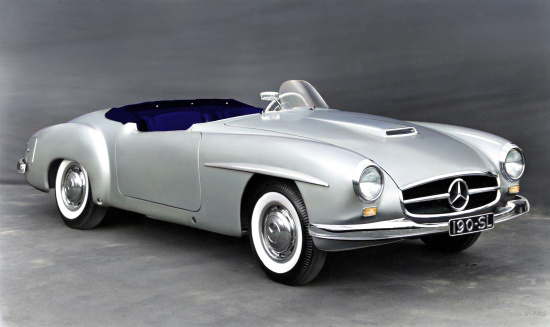
Although the concept of the car was essentially born at the insistence of Max Hoffman, he did not have it his own way. For cost reasons, a number of components such as the chassis and the front suspension with sub-frame had to be shared with the 180 sedan. This subframe was isolated from the chassis with rubber bushings and offered an almost vibration-free ride. A feature that was unheard of in a two-seater open touring car at the time.
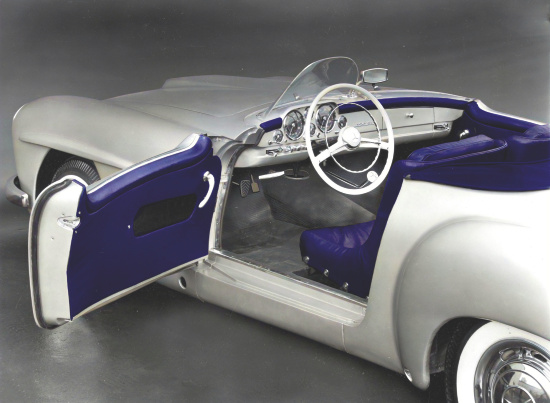
An attractive new design
Although the 180 Sedan and 190SL shared similar genes, there were some important differences. The 180 chassis had been shortened by 254 mm (10 in) and the rear axle was not the carry-over from the previous 170S, but from the more powerful 220a. This meant that it already had the improved single-link, low-pivot swing axle. Fortunately, the idea to upgrade the aging side-valve engine of the 170S/180 never came up.
Instead, it was a fairly advanced four-cylinder in-line version originally developed in its basic form for the 180. This engine was loosely based on the M186 from the larger 300 Sedan. It had a chain-driven overhead camshaft and twin Solex 44PHH governor downdraft carburetors.
The carburetor system, by the way, was designed by a 27-year-old young engineer. He later became known as the father of the M100 engine for the majestic Mercedes 600. His name was Dr. Kurt Obländer. He also tested the Mercedes 190 SL prototype for its road holding. The new engine was called M121 B II, it had 1,897 cc (116 cu in) and offered 105 hp.
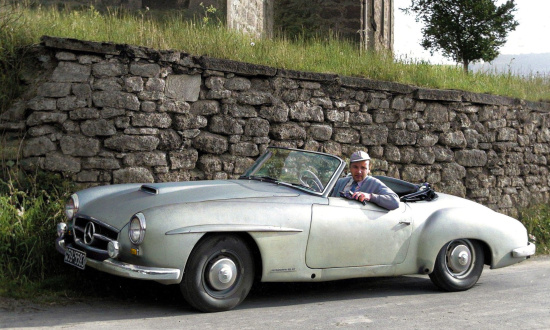
Dr. Obländer with the running prototype
Two prototypes were built
Despite some reservations from other Daimler-Benz departments and even from Dr. Nallinger himself, it gave a respectable top speed of 172 km/h (108 mph) and could accelerate the roadster from a standstill to 100 km/h (62 mph) in 14.4 seconds. However, 190SL enthusiasts later agreed that the car would have benefited from an additional 30 to 50 hp.
The wheelbase was 2,400 mm (94.5 in), identical to that of the 300SL. The overall length of the car was 4,220 mm (166 in), which was about 300 mm (11.8 in) shorter than its bigger brother. Gasoline consumption was fairly moderate with an average of 9 liters per 100 km (26 mpg). The 65 liter (17 gallon) fuel tank also proved to be adequate. Although never officially advertised, the car could be ordered with four different gear ratios: 3.70:1, 3.89:1, 3.90:1 and 4.10:1. The 3.90:1 was the most common, as it offered the best balance between acceleration and top speed.
As promised to Hoffman, one of two prototypes of the car was sent to the New York Auto Show in February 1954, along with the 300SL. It did not run, however, and its Solex carburetors were made of wood. The second prototype did run and was used for testing back home. The power and performance figures published for the New York appearance proved to be on the optimistic side.
Visitors to the show, of course, were unaware of this. The public and the press admired the 190SL and saw in it an elegant, smaller sports car sibling to the out-of-this-world 300SL.
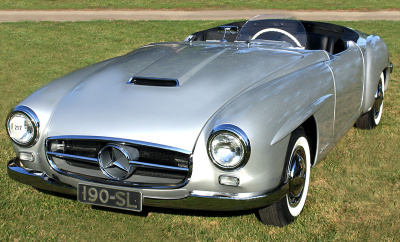
Mercedes 190 SL prototype vs. actual production model
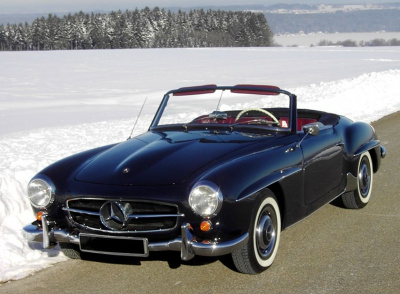
Mercedes 190 SL is launched in 1995 in Geneva
More than a year after its introduction in New York, the Mercedes 190 SL was finally unveiled at the Geneva Motor Show in March 1955. Its base price in Germany was 16,500 DM ($4,125). Its starting price in the U.S. was just under $4000, making it more expensive than the elegant and fast Jaguar XK140. In memory of the Silver Arrows racing cars, the 190SL was only available in silver metallic in its first year.
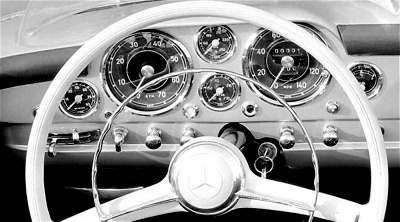
Prototype instruments lay-out vs. production version
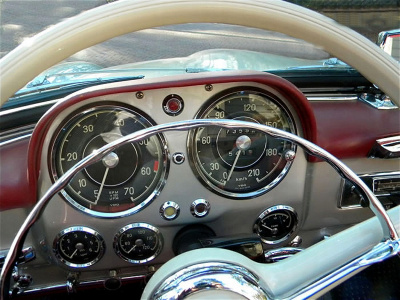
Gasoline consumption was fairly moderate, averaging just under 9 liters per 100 km, or about 26 mpg. Also the 65 liter or 17 gallon fuel tank proved to be quite sufficient. Although never officially advertised, the Mercedes 190SL could be ordered with four different gear ratios: 3.70:1, 3.89:1, 3.90:1 and 4.10:1. The 3.90:1 was the most common, as it offered the best balance between acceleration and top speed.
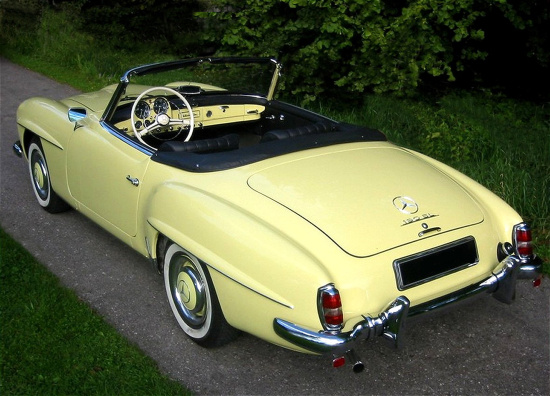
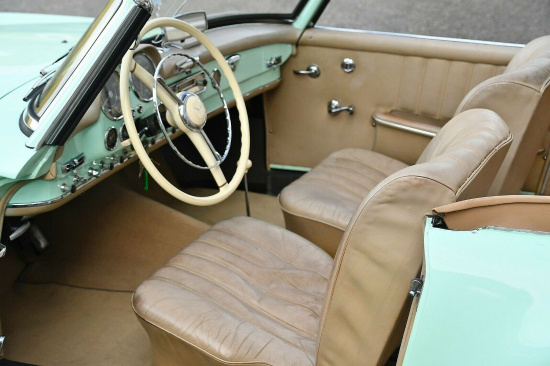
In the course of its career, the car underwent minor improvements, here is a small selection:
- 1955
- ATE T50 brake booster was offered as an option
- Moldings that were fitted to instrument panel and windows were switched from clamp to screw fastening
- 1956
- Ashtray was changed to one with rotating base
- Three-point engine suspension was upgraded to a four-point version
- Coupe roof changed from aluminum to steel
- Clock mounted on glovebox cover now standard
- Bucket seats in the roadster were changed to folding seats of the coupe
- 1957
- Lights for license plates are now located in bumper guards
- 1958
- Plexiglass sun visors were replaced by card box ones with leather cover
- Ignition switch with steering lock became standard equipment
- 1959
- Coupe hardtop comes with enlarged, wrap-around rear window
- Roadster soft top receives enlarged rear view window
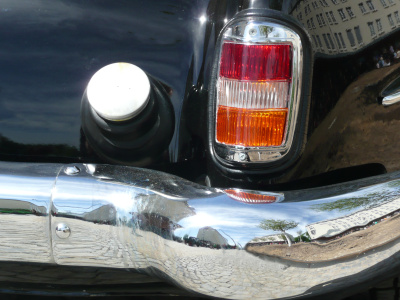
First and second generation taillights
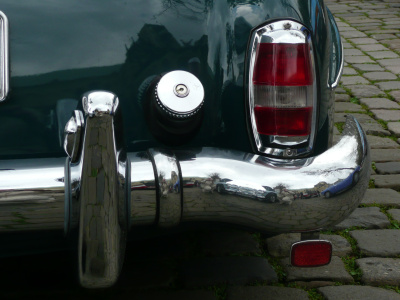
The Mercedes 190 SL saves the SL program
The Mercedes 190SL was always compared to the more powerful 300SL, but there was never any need. It did not have the muscle of that pure thoroughbred, but its quality and refinement were almost on a par. For some journalists its road handling was even better (compared to the Gullwing, not the 300SL Roadster).
As mentioned earlier, there was a general consensus that the car could use a more powerful engine to match the “S” for sport in the SL’s name. But resources in Stuttgart were limited to complete this project. (Please see here my blog about that project) The larger engine would have to wait for a successor model.
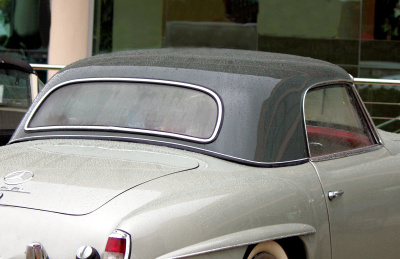
First and second generation hardtop

If it had only been for the 300SL, the exercise of building such a car would have been a single one. Sales of the 300SL were relatively modest and it’s a safe assumption that Daimler-Benz lost money on every car produced. The Mercedes 190SL sold 25,881 units in its career and it was decided already in 1958 to develop a new SL. In the end, the “smaller” SL was more convincing from a business point of view, and aren’t we all glad to have the opportunity to enjoy such a car today?
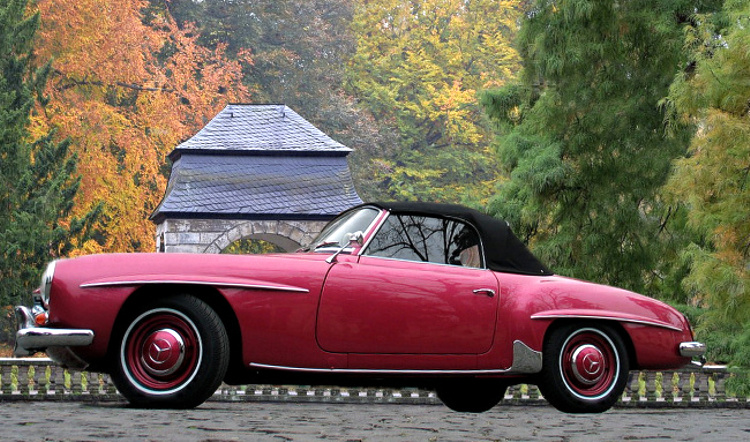
If you want to read more about the 190SL, its development and history, plus the attempts by Daimler-Benz to give it a larger 2.2-liter engine, here you can buy the book and e-book. This link leads you to the US Amazon site, but the title is the same on Amazon sites in other countries. I am sure, you will enjoy.
A German version of this book is also available from Amazon.
